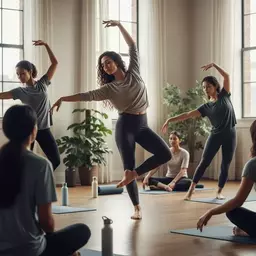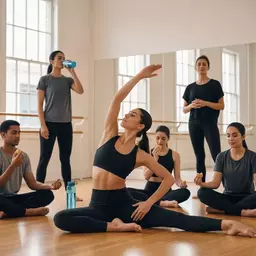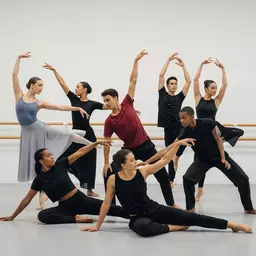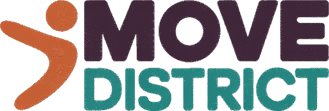Choreographing Dance Routines Made Simple

As you prepare to elevate your dance journey, consider the powerful impact that well-crafted choreography can have on your performances. Each step you take not only expresses your artistry but also tells a story that resonates with your audience. What elements will you explore to captivate and inspire?
What You Will Learn
- Choreography involves movement selection, musicality, storytelling, and collaboration, all of which are vital for creating impactful routines.
- Effective choreography is crucial in competitions as it influences judging criteria, audience engagement, and team dynamics.
- Different dance styles, including jazz, ballet, hip-hop, and contemporary, each bring unique elements that shape the choreography and its execution.
- Continuous improvement in dance skills is essential; setting personal goals and exploring new styles can elevate your performance and creativity.
- Engaging with local dance communities and participating in workshops can provide valuable feedback and networking opportunities.
Understanding the Dance Choreography Process
This visual represents the key elements and styles that contribute to successful dance choreography, highlighting the journey from concept to performance.
What Choreography Involves
- 1. Movement Selection: Choosing steps that express theme.
- 2. Musicality: Aligning movements with rhythm.
- 3. Storytelling: Developing a captivating narrative.
- 4. Collaboration: Refining techniques with dancers.
Exploration & experimentation are key.
Why It's Important for Competitions
- Judging Criteria: Creativity, complexity, execution.
- Audience Engagement: Captivating routines draw viewers in.
- Team Dynamics: Fosters synchrony and collective impact.
Sets dancers apart, ignites passion.
Impact of Different Dance Styles
Style dictates movement vocabulary & expression.- Jazz: Energy, rhythmic, sharp movements.
- Ballet: Technique, grace, classical storytelling.
- Hip-Hop: Personal expression, dynamic, street elements.
- Contemporary: Blended techniques, emotional depth.
Key Insights for Successful Routines
Foundation for shining in competitions.- Music Selection: Resonates with dancer & audience.
- Movement Development: Unique, showcases strengths.
- Rehearsal & Warm-up: Builds confidence, peak performance.
Next Steps for Dancers/Choreographers
- Find Resources: Online courses, books, social media.
- Engage Locally: Attend events, join groups, open classes.
- Participate: Workshops, showcases for experience.
Continuous improvement & community building.
Understanding the Dance Choreography Process for Competitions
Choreography is the heart and soul of dance competitions, where creativity meets technical skill. It’s not just about stringing together movements; it’s about telling a story and captivating the audience. As a passionate dancer and educator, I’ve seen firsthand how a well-crafted routine can elevate a performance from good to unforgettable. Let’s dive into what choreography truly involves and why it’s crucial in the competitive dance landscape!
What Does Choreography Involve?
At its core, choreography is the art of designing dance sequences and movements that are performed to music. It encompasses a variety of elements, including:
- Movement selection: Choosing the right steps that express the theme and emotions.
- Musicality: Ensuring that the movements align with the rhythm and dynamics of the music.
- Storytelling: Developing a narrative that resonates with the audience.
- Collaboration: Working with dancers to refine techniques and interpretations.

This process is about exploration and experimentation! I always encourage my students at Move District to express their unique styles while mastering essential techniques. Each dancer brings something special to the table, which can dramatically influence the final choreography. To deepen your understanding of how to infuse narrative into your routines, explore crafting dance with emotional depth.
Why Is Choreography Important for Dance Competitions?
Choreography holds significant weight in the competitive arena. It’s what sets dancers apart and can make or break their performance. Here are a few reasons why it’s essential:
- Judging criteria: Judges look for creativity, complexity, and execution—elements that are all tied to the choreography.
- Audience engagement: A captivating routine draws the audience in, making them feel connected to the performance.
- Team dynamics: Effective choreography fosters teamwork and synchrony among dancers, enhancing their collective impact.
When working on choreography, I emphasize the importance of these elements to my students. It’s about igniting that spark of passion in each dancer and inspiring them to push their boundaries!
Exploring Different Dance Styles and Their Impact on Choreography
Dance is a vast world filled with various styles, and each dramatically influences choreography. Whether it’s jazz, ballet, hip-hop, or contemporary, the style dictates the movement vocabulary and expression. Here’s how different styles impact choreography:
- Jazz: Known for its energy and rhythmic variations, jazz choreography often incorporates sharp movements and improvisation.
- Ballet: With its emphasis on technique and form, ballet choreography focuses on grace, lines, and storytelling through classical movements.
- Hip-Hop: This style encourages personal expression and can include street dance elements, allowing for a more relaxed and dynamic choreography.
- Contemporary: Blending various techniques, contemporary choreography often explores themes and emotional depth through fluid movements.
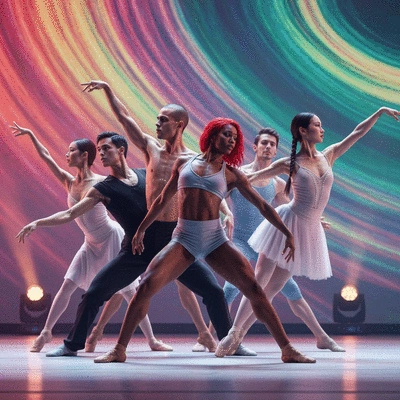
As we explore these styles at Move District, I encourage dancers to draw inspiration from each genre. Incorporating elements from different dance styles can lead to innovative routines that truly stand out in competitions! For a comprehensive look at various dance forms, check out Australia's dance styles explained.
Pro Tip
Did you know? Incorporating elements from various dance styles can significantly enhance your choreography. For example, blending the sharp movements of jazz with the fluidity of contemporary can create a unique and captivating routine that stands out in competitions. Don't hesitate to experiment and let your creativity shine!
Summarizing Key Insights for Successful Dance Routines
As we wrap up our exploration of the dance choreography process, it’s essential to recap the critical elements that contribute to crafting successful dance routines. Understanding the nuances of choreography, along with the importance of music selection and movement development, forms the foundation for any dancer aiming to shine in competitions. A well-structured approach not only enhances performance but also enriches the dancer's creative journey!
In summary, the key insights we’ve discussed include:
- The importance of selecting the right music that resonates with both the dancer and the audience.
- Developing unique movements and transitions that showcase individual strengths and style.
- The role of effective rehearsal schedules and warm-up routines in building confidence and ensuring peak performance.
Embracing these aspects will surely pave the way for a more fulfilling experience on stage. Remember, dance is not just about competition; it’s about expressing yourself and connecting with others in the community!
Encouragement for Continuous Improvement in Dance Skills
As dancers, we are on a lifelong journey of learning and growth. I encourage you to embrace every opportunity for continuous improvement. Whether it’s perfecting a challenging movement, experimenting with new choreography, or simply attending a class, every moment contributes to your development. What steps can you take today to elevate your dance skills?
Consider setting personal goals that inspire you to push your boundaries. For instance:
- Try a new dance style to expand your repertoire.
- Join a local dance class for additional guidance and feedback.
- Record your practices to analyze and refine your movements.
Every dancer has their unique path; celebrate your milestones and learn from every experience. The vibrant dance community at Move District is here to support you on this exciting journey!
Next Steps for Aspiring Choreographers and Dancers
Now that you have a solid understanding of the dance choreography process and the steps to create a captivating routine, let’s explore your next steps as an aspiring choreographer or dancer. There is a world of resources and opportunities waiting for you, and they can significantly enhance your skills and experiences.
Where to Find Additional Resources for Dance Choreography
Finding the right resources is crucial for honing your choreography skills. Here are some excellent avenues for discovering valuable materials:
- Online platforms and courses specializing in choreography techniques.
- Books and articles by renowned choreographers offering insights into their creative processes.
- Social media groups and forums where dancers share tips and resources.
By tapping into these resources, you’ll gain further inspiration and expand your choreography toolkit. Remember, at Move District, we often share insightful content that you can leverage to fuel your creativity!
Engaging in Local Dance Communities and Classes
Building connections within local dance communities is vital for your growth. Engaging with fellow dancers not only enhances your skills but also fosters a sense of belonging. Here’s how you can get involved:
- Attend local dance events and workshops to learn from experienced instructors.
- Join community dance groups or clubs to collaborate and share experiences.
- Participate in open classes to meet other dancers and expand your network.
These interactions can lead to new friendships, valuable feedback, and countless opportunities for performance and collaboration within the dance community!
Participating in Dance Workshops and Showcases
Stepping into workshops and showcases is a fantastic way to showcase your talent and gain invaluable experience. Consider the following benefits:
- Workshops often feature expert instructors who can provide personalized insights.
- Showcases allow you to perform in front of an audience, boosting your confidence.
- Networking opportunities arise, connecting you with industry professionals.
These experiences can transform the way you approach dance and choreography, so don’t hesitate to sign up for the next opportunity that comes your way! Remember, it’s all about growth, connection, and finding joy through dance. For more tips on maintaining your physical and mental well-being throughout your dance journey, explore dancer wellness tips for students.
Frequently Asked Questions About Dance Choreography
What is the primary goal of choreography in dance competitions?
The primary goal of choreography in dance competitions is to create a captivating routine that tells a story, engages the audience, and meets specific judging criteria such as creativity, complexity, and execution. It's about combining artistic expression with technical skill.
How do different dance styles influence choreography?
Different dance styles significantly influence choreography by dictating the movement vocabulary and expression. For example, Jazz emphasizes energy and sharp movements, Ballet focuses on grace and classical forms, Hip-Hop allows for dynamic personal expression, and Contemporary blends techniques for emotional depth.
What are the key elements involved in the choreography process?
Key elements in the choreography process include movement selection (choosing steps that express theme and emotions), musicality (aligning movements with rhythm), storytelling (developing a narrative), and collaboration (refining techniques with dancers).
Why is continuous improvement important for dancers?
Continuous improvement is vital for dancers because it fosters lifelong learning and growth. It encourages dancers to perfect challenging movements, experiment with new styles, and attend classes or workshops, all of which contribute to their development and help them push their boundaries.
How can dancers engage with local dance communities?
Dancers can engage with local dance communities by attending local dance events and workshops, joining community dance groups or clubs, and participating in open classes. These interactions lead to valuable feedback, networking opportunities, and a sense of belonging.
Recap of Key Points
Here is a quick recap of the important points discussed in the article:
- Choreography is about selecting movements that express themes and emotions effectively.
- It plays a crucial role in dance competitions by influencing judging criteria and audience engagement.
- Different dance styles significantly impact choreography, allowing for unique expressions and movements.
- Successful routines require the right music selection, unique movements, and effective rehearsal schedules.
- Continuous improvement and engagement in local dance communities can enhance skills and foster connections.





